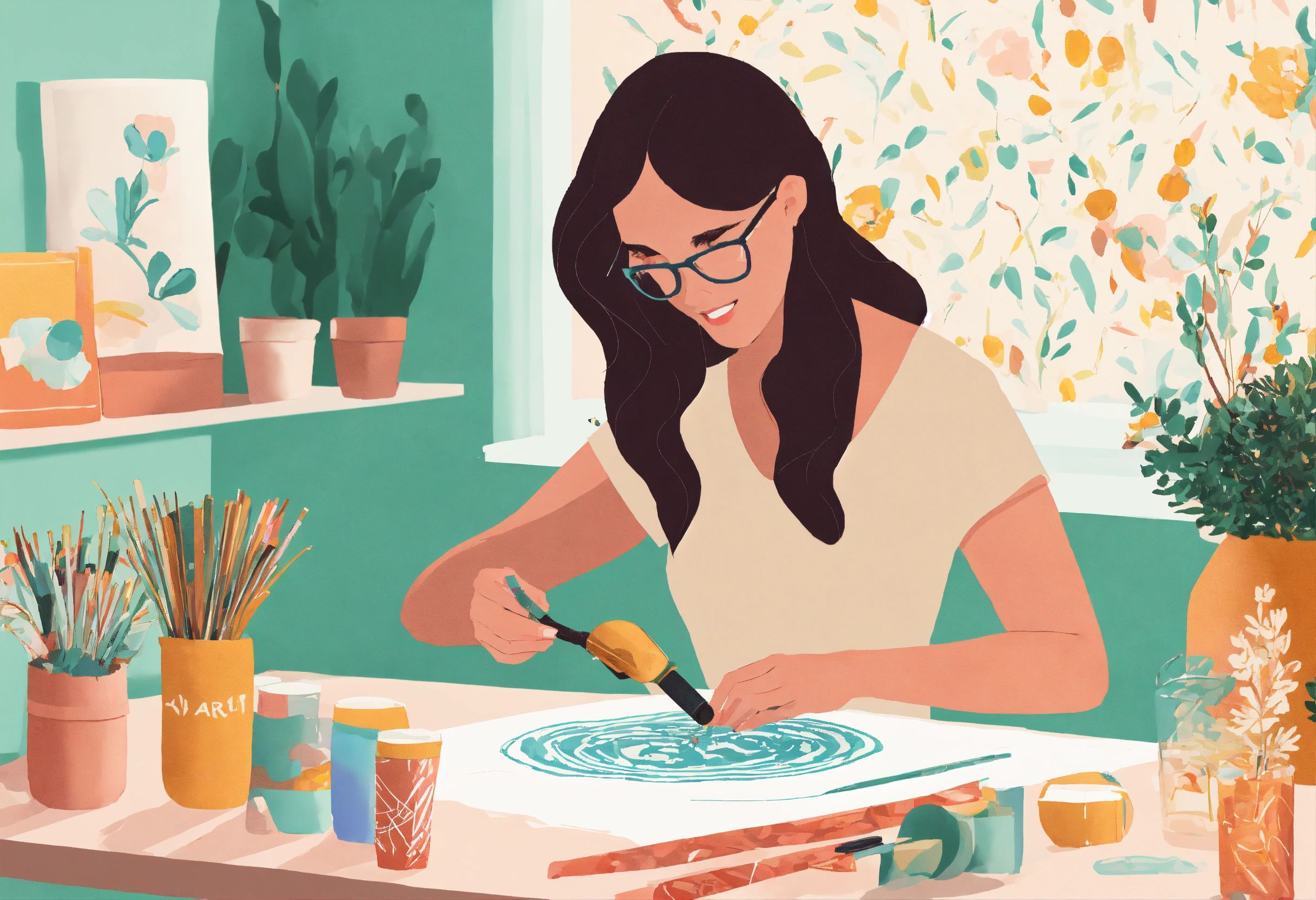In a world where mental health awareness is on the rise, finding ways to provide therapeutic support remotely is becoming increasingly important. Virtual art therapy offers a unique and effective approach to healing, allowing individuals to express themselves creatively while working through emotional challenges—all from the comfort of their own homes. Whether you’re an established art therapist or someone interested in offering creative support remotely, the demand for virtual art therapy services is growing.
But if you’re new to the concept of virtual art therapy—or wondering how it works and how you can get involved—you probably have a lot of questions. This FAQ blog post will address the most common ones, providing you with clear answers so you can better understand the ins and outs of promoting healing through virtual art therapy, all while earning a living remotely.
Frequently Asked Questions: Virtual Art Therapy
1. What is virtual art therapy?
Virtual art therapy involves using creative arts, such as drawing, painting, or sculpture, as a tool for emotional expression and healing in a remote setting. It combines art-making with therapeutic guidance via video calls or online platforms.
2. How does art therapy help with healing?
Art therapy helps individuals explore emotions, reduce stress, improve self-esteem, and process trauma in a nonverbal way, providing an outlet for feelings that may be difficult to express with words.
3. Can virtual art therapy be as effective as in-person sessions?
Yes, virtual art therapy can be just as effective. The key is to create a safe, supportive environment online and use digital tools that enhance the creative experience.
4. Who can benefit from virtual art therapy?
Anyone facing emotional challenges, including children, adults, and seniors, can benefit. It’s particularly helpful for those dealing with anxiety, depression, grief, trauma, or stress.
5. What qualifications do I need to offer virtual art therapy?
To practice as a licensed art therapist, you need a master’s degree in art therapy and a valid certification or licensure. Experience in therapy or counseling is also essential to provide effective support.
6. Do I need to have formal art training to offer art therapy?
While formal art training isn’t necessary, a solid understanding of art techniques and a background in therapy is crucial. The focus of art therapy is on the therapeutic process, not artistic ability.
7. What platforms can I use to conduct virtual art therapy sessions?
You can use video conferencing platforms like Zoom, Skype, or Google Meet, along with online collaboration tools like Padlet or Jamboard for digital art-making. Many therapists also use secure, HIPAA-compliant platforms to ensure privacy.
8. How can clients share their artwork virtually?
Clients can share their artwork via video or by uploading digital images to a shared folder or platform. Some therapists also use apps or online tools to create digital art during the session.
9. How do I charge for virtual art therapy sessions?
Rates vary based on your experience, location, and client needs. Generally, art therapists charge anywhere from $50 to $150 per hour for individual sessions. You can also offer package deals for ongoing therapy.
10. Do I need special equipment to offer virtual art therapy?
At a minimum, you’ll need a computer, a reliable internet connection, a webcam, and a microphone. If you're incorporating digital art tools, you may also want a drawing tablet or stylus.
11. How do I ensure privacy and confidentiality in virtual art therapy?
Use encrypted video platforms, secure file-sharing systems, and ensure that your space is quiet and private. Discuss confidentiality expectations with your clients and follow legal requirements for privacy.
12. How do I market virtual art therapy services?
You can market your services through social media, your website, online therapy directories, and word-of-mouth. Offering free workshops or content can also attract clients who are interested in the benefits of art therapy.
13. Can I offer group art therapy sessions online?
Yes, group sessions can be offered virtually, and they can be a great way to build community. However, it’s important to keep the group size manageable to ensure each participant receives the attention they need.
14. What age groups can benefit from virtual art therapy?
Virtual art therapy can benefit all age groups—from young children to seniors. For kids, parents or guardians may need to assist with the technology, while adults and seniors often engage more independently.
15. Can virtual art therapy be done for specific issues, like trauma or grief?
Yes, virtual art therapy is especially helpful for sensitive issues like trauma, grief, and anxiety. It allows clients to express complex emotions in a safe and non-threatening way, facilitated by a trained therapist.
Final Thoughts
Virtual art therapy offers a creative and powerful way to promote emotional healing remotely. Whether you're a licensed art therapist or someone passionate about using art for healing, this approach allows you to make a meaningful impact on people’s mental health while earning a living from anywhere.
The beauty of virtual art therapy is that it’s accessible, flexible, and deeply effective. If you're ready to offer this service, ensure you're qualified, use the right tools, and market yourself to the right audience. With the right approach, you’ll not only help individuals express and heal through art, but you’ll also be building a rewarding and fulfilling career.
Now that you know how virtual art therapy works, it’s time to explore how you can start offering this valuable service and bring healing to those who need it most!






0 Comments